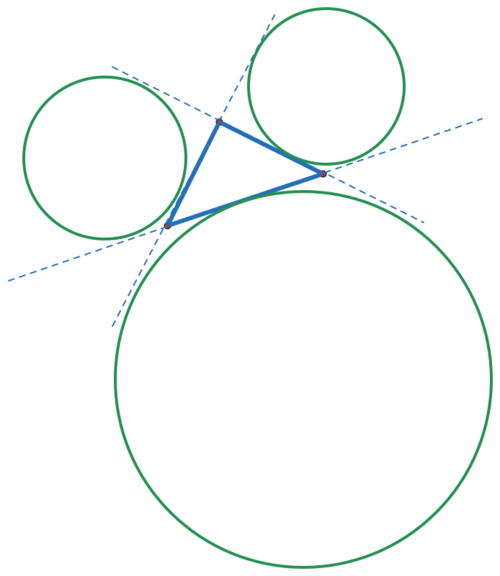Mickey Mouse?
 If
a
,
b
,
and
c
are the side lengths of
△
A
B
C
opposite to angles
A
,
B
,
and
C
,
respectively, and
r
1
,
r
2
,
and
r
3
are the corresponding exradii, then find the value of
If
a
,
b
,
and
c
are the side lengths of
△
A
B
C
opposite to angles
A
,
B
,
and
C
,
respectively, and
r
1
,
r
2
,
and
r
3
are the corresponding exradii, then find the value of
r 1 b − c + r 2 c − a + r 3 a − b .
The answer is 0.
This section requires Javascript.
You are seeing this because something didn't load right. We suggest you, (a) try
refreshing the page, (b) enabling javascript if it is disabled on your browser and,
finally, (c)
loading the
non-javascript version of this page
. We're sorry about the hassle.
3 solutions
Since the information given in the problem implies the formula holds the same value for all triangles, we can consider the specific case of an equilateral triangle a=b=c and watch everything cancel out instantly to 0.
I also did this way initially.
This method is good for competitive exams, with MCQ question. I will use this for multiply Olympiads. Thanks for sharing.
The third addend in the equation becomes zero in both an equilateral and (what I used) an isoceles. I like both the solutions below. Bravo!
Since r 1 = s − a Δ , r 2 = s − b Δ , r 3 = s − c Δ (where Δ and s are area and semiperimeter of the triangle). Put these in the question. After expanding all terms would cancel out.